Are you planning to summit the World’s highest free-standing Mountain and Africa’s highest mountain and wondering how to go about it? We bring you the ultimate guide of climbing Mount Kilimanjaro at 5895 meters above sea level to explore its varying vegetation zones (rainforest, Alpine desert, to Arctic), wildlife and weather conditions.
Mount Kilimanjaro is a stunning dormant Volcano found in Northeastern Tanzania, close to the Kenyan border and is marked by three volcanic cones named Mawenzi, Kibo and Shira. This Mountain is known for being the 4th most topographically prominent summit on Earth. During your Mount Kilimanjaro climbing adventure, you will learn about its famous climbers that include Hans Meyer (the first European to summit it in 1889) and Sheila McDonald (the first woman to climbing this Mountain and drinking Champagne on its peak).
This Mountain is not just summited for the sake of it but also to experience the thrill of reaching Africa’s highest summit as well as learning about its people. Get prepared to enjoy Campfire songs, heart-warming laughs, evening farewells of lala salama (good nights), to snuggling into the warm sleeping bag while you fall in love with the country. If you have ever climbed Kilimanjaro or any other Mountain, you will agree that the process of planning the trip is challenging. Read through our comprehensive guide to climbing Mount Kilimanjaro for your unforgettable experiences;
Duration of climbing Mount Kilimanjaro
There are currently 7 renowned routes of climbing Mount Kilimanjaro- Umbwe (6-7 days), Marangu (5-6 days), Rongai (6-7 days), Machame (6-7 days), the Northern Circuit (8-9 days), Shira route (6-8 days), and Lemosho route (7-8 days). Each of these routes has a varying level of difficulty, advantages and drawbacks. It will interest you to know that Marangu is the most popular route and ideal for beginners while Umbwe is the most difficult hence only preferred by experienced mountaineers.
Generally, it will take about 5-9 days to climb Mount Kilimanjaro via these 7 routes.
Level of difficulty of climbing Mount Kilimanjaro
You will agree that mountain climbing is not a simple walk in the Park and thus a challenging undertaking. You might hear that Mount Kilimanjaro is one of the easiest summits in the African Continent but don’t forget that it is a 5895-meter mountain that shouldn’t be taken for granted. To make your climbing adventure easier, it is recommended to hire a porter (to offer assistance in carrying your backpack, food, camping gear, water and clothing).
Attitude sickness is inevitable but a slow and steady ascent will allow your body to adjust to varying altitudes. If you race to the peak, then be prepared to altitude sickness as there will be less oxygen in the air. Some climbers opt to skip acclimatization, opting to make fast ascents on the Mountain.
How much it costs to climb Mount Kilimanjaro
Just like other mountains, Kilimanjaro isn’t a cheap mountain to climb. Besides Park entry fees, you will need to pay for Camping along the slopes, a guide and sometimes a porter (optional). Remember that you will need to have weighty Camping gear, food, and your clothing. You will need between $2000 and $5000 to climb Africa’s highest Mountain, and this largely depends on the route and its duration as well as the Tour Operator you have booked your adventure with. However, cheap options should be taken with a pinch of salt as you might end up paying for guides separately.
How do you prepare for your Mount Kilimanjaro climbing adventure?
Climbing Mount Kilimanjaro isn’t a joke and one-day thing and for this reason, proper planning is recommended. You can start by undertaking several training programs (climbing smaller mountains, climb stairs or hiking hills) to help improve your fitness levels. If you don’t wish to hire porters, then you can practice climbing/hiking while carrying heavy backpacks.
What to carry for your Mount Kilimanjaro climbing trip?
One of the ways to prepare for your Mount Kilimanjaro climbing adventure is by packing right and therefore, you shouldn’t forget a comfortable and breathable pair of hiking boots, thick cotton socks, a waterproof backpack (for holding your flashlight, camera, binoculars, food and water), comfortable waterproof pants, thermals for the cold nights, rain jacket, gloves and beanie, warm clothing for the cold nights, toiletries (toothpaste, deodorant, toothpaste, tissue paper, lip gloss, hair comb and others), energy-giving snacks, re-usable water bottle, basic first aid kit, and travel documents.
When is the best time to climb Mount Kilimanjaro?
Mount Kilimanjaro can be climbed all year round, although many climbers prefer the dry season. Months of June through September are considered the peak time because they coincide with the European summer Holidays. Also, they are marked by warmer temperatures, good visibility and drier climbing trails but be ready for cold nights. The same weather can be experienced during December through February.
The rainy season- November to early-December and March to May are characterized by heavy rains, wet/muddy/slippery trails. These conditions make it more difficult to climb Mount Kilimanjaro, but if you prefer climbing with fewer people, then these are the months to choose.
Getting to Mount Kilimanjaro
Kilimanjaro International Airport is the nearest Airport to Africa’s highest Mountain, and there are several direct flights from Europe, Middle East, Africa and US. There are also options of flying via other popular safari destinations such as Nairobi, Dar es Salaam, Kigali, Arusha and Entebbe.
Moshi is the nearest Town to Mount Kilimanjaro and only takes about one hour and 20 minutes to reach. Public transportation (taxi) or private transportation (booked through Tour Operators) can be used to get to Moshi, then to the base of the Mountain.
WhatsApp us
